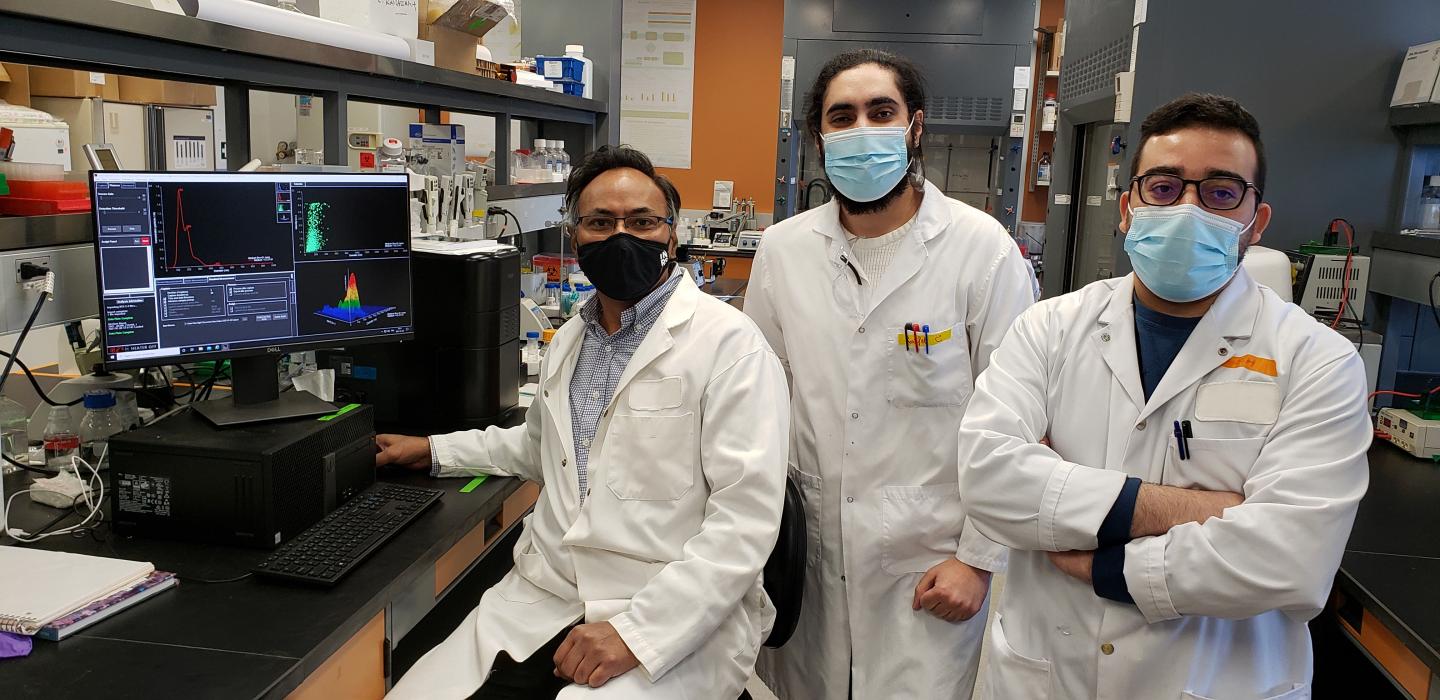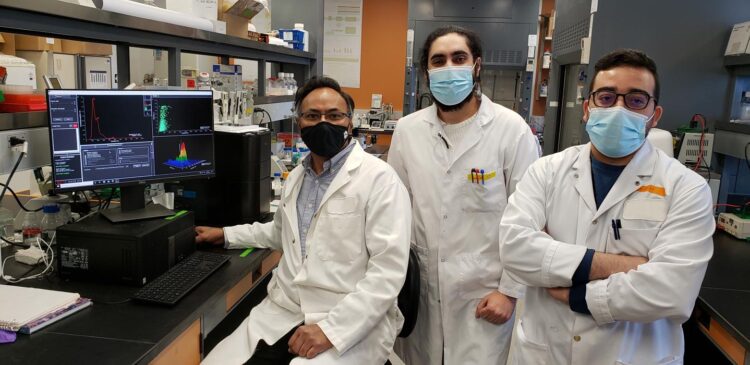A research team at INRS has discovered two early plasma markers to detect Alzheimer’s disease five years before its onset.

Credit: INRS
A Quebec research team has discovered two early plasma markers to detect Alzheimer’s disease five years before its onset. The results of this recent study led by the doctoral student Mohamed Raâfet Ben Khedher and postdoctoral student Mohamed Haddad, directed by Professor Charles Ramassamy of the Institut national de la recherche scientifique (INRS), have been published in the prestigious scientific journal Alzheimer’s & Dementia: Translational Research & Clinical Interventions (TRCI).
The diagnosis of Alzheimer’s disease is usually based on a series of psychometric tests assessing cognitive function, brain imaging and cerebrospinal fluid analysis. Yet, these tests have their limitations. “The lumbar puncture is invasive, while brain imaging is expensive and not 100% reliable. This complicates regular follow-up,” says Professor Ramassamy.
Moreover, people with the disease are often being diagnosed at a late stage of the disease. “We need to find more and more early markers so we can act as soon as possible. When the disease is symptomatic, there is little, if any, way back,” he explains.
The research team took up this challenge by discovering two markers, detectable through a blood test, enabling them to follow the progression of the disease. These markers are found in plasma extracellular vesicles, pockets that are released by all cells in the body and circulate in the bloodstream.
The variation of markers
The team focused specifically on the “sporadic” Alzheimer’s disease, the most common type of the disease. It stems mainly from the presence of the APOE4 susceptibility gene, the E4 variant of the gene coding for apolipoprotein. Patients with this gene who developed the disease five years later had markers present that varied with the progression of the disease.
The research was carried out by analyzing blood samples collected as part of the Canadian Study of Health and Aging (CSHA). The population studied consisted of patients with cognitive problems, but not suffering from dementia, and only some of whom developed Alzheimer’s disease. Professor Ramassamy hopes to analyze a larger population with pre- and post-disease samples. This would allow him to determine the progression of markers after the onset of symptoms. His research on the markers located in the vesicles, opens up the possibility for studying other diseases, such as vascular dementia.
###
About the study
The article “Apolipoprotein E4-driven effects on inflammatory and neurotrophic factors
in peripheral extracellular vesicles from cognitively impaired not demented participants converted to Alzheimer’s disease” follows a study published in February 2020. The research was supported by a donation from the Charron family through the Armand-Frappier Foundation, as part of the Louise and André Charron Research Chair in Alzheimer’s Disease, enabling the acquisition of a crucial piece of equipment, the NanoSight NS300.
About INRS
INRS is a university dedicated exclusively to graduate level research and training. Since its creation in 1969, INRS has played an active role in Quebec’s economic, social, and cultural development and is ranked first for research intensity in Quebec and in Canada. INRS is made up of four interdisciplinary research and training centres in Quebec City, Montreal, Laval, and Varennes, with expertise in strategic sectors: Eau Terre Environnement, Énergie Matériaux Télécommunications, Urbanisation Culture Société, and Armand-Frappier Santé Biotechnologie. The INRS community includes more than 1,400 students, postdoctoral fellows, faculty members, and staff.
Source :
Audrey-Maude Vézina
Service des communications de l’INRS
418 254-2156
[email protected]
Media Contact
Audrey-Maude Vézina
[email protected]
Related Journal Article
http://dx.





